Idea by
Matheus Ribeiro Cunha
Call for ideas 2020
White memory, Black inheritance
White memory, Black inheritance

- Site-specific cases
The project arouses the need for new perspectives for the prospect of the construction of contemporary space, seeking to reverse the aspects of memory devaluation and its reflexes in our society. The present work constitutes a critique of the omitted narrative of Black memory and the structuring of this emptying reflected in the spatial construction of cities.
The place attracts several people who passes by. Today a set in ruins, it draws attention for its peculiar beauty in the region. But the highlight of the set is the “Casa Grande”. As a result, visitors do not have the dimension of the existence of what is below the high level of the “Casa Grande”: the slave quarters and the mill. This differentiation in elevation in farm construction brings this segregation beyond spatial boundaries, but this physical aspect also unintentionally relates to the erasure of this memory.
The project is an essay of deconstruction and resignification of memory and space.
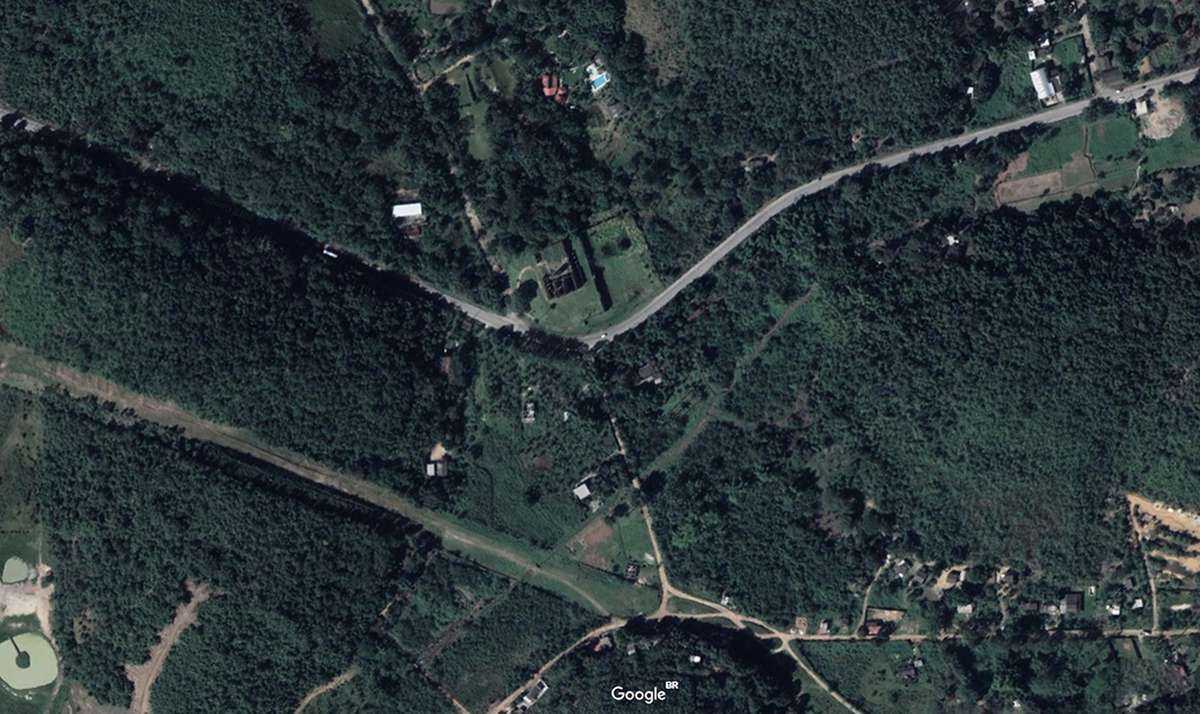
Aerial view of São Bernardino Farm and its surroundings. Reference: Google Earth
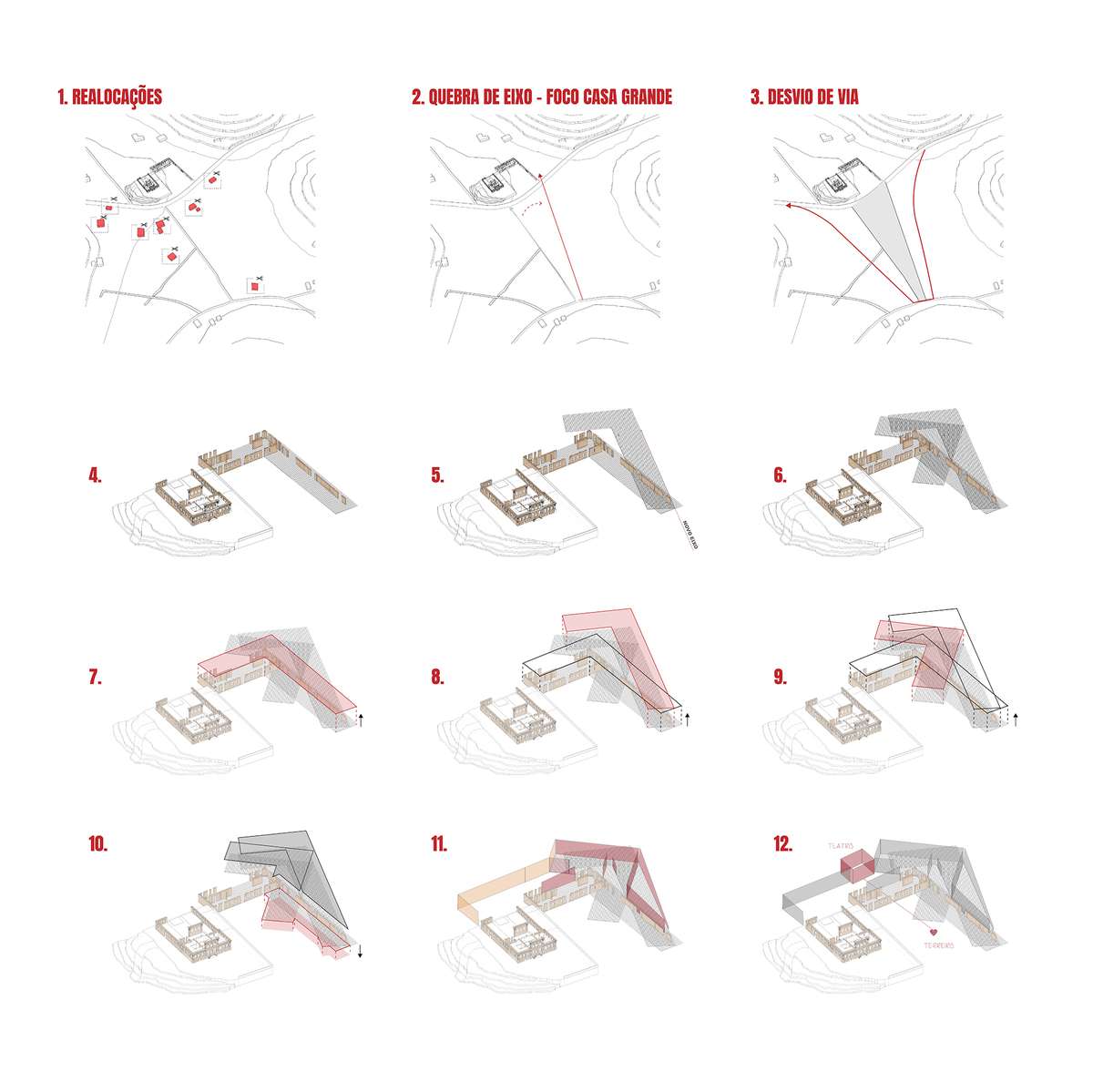
The initial strategies were built from the perception of reversing spatial aspects of Casa Grande's protagonization, which begins in the first major gesture: the breaking of the palm tree axis, which was designed to emphasize the imposing architecture of Casa Grande. With the break of this axis, the project gets an arrival that turns into a park, as a route that is told by sights, preparing the visitor for the arrival at the Memorial. Reference: Personal collection

From the path of the ruins the visitor is invited to “dive” into the interior of the project, a metaphorical strategy that brings the perception of entering the narrative of the place, which is led by a ramp that cuts the reflection pool, another element of great relevance in the project. Reference: Personal collection
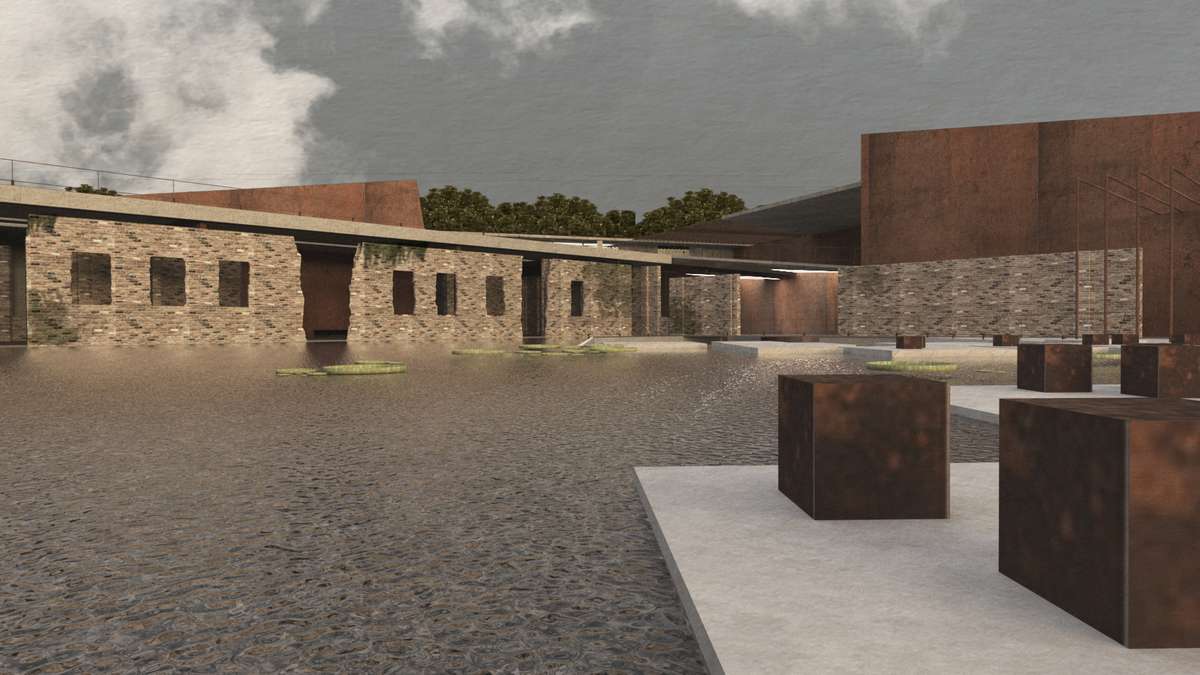
The water of this pool reflects the ruins of the slave quarters and the mill that lie exactly in the yard, transforming this space of great noise into a place of silence and reflection. Reference: Personal collection
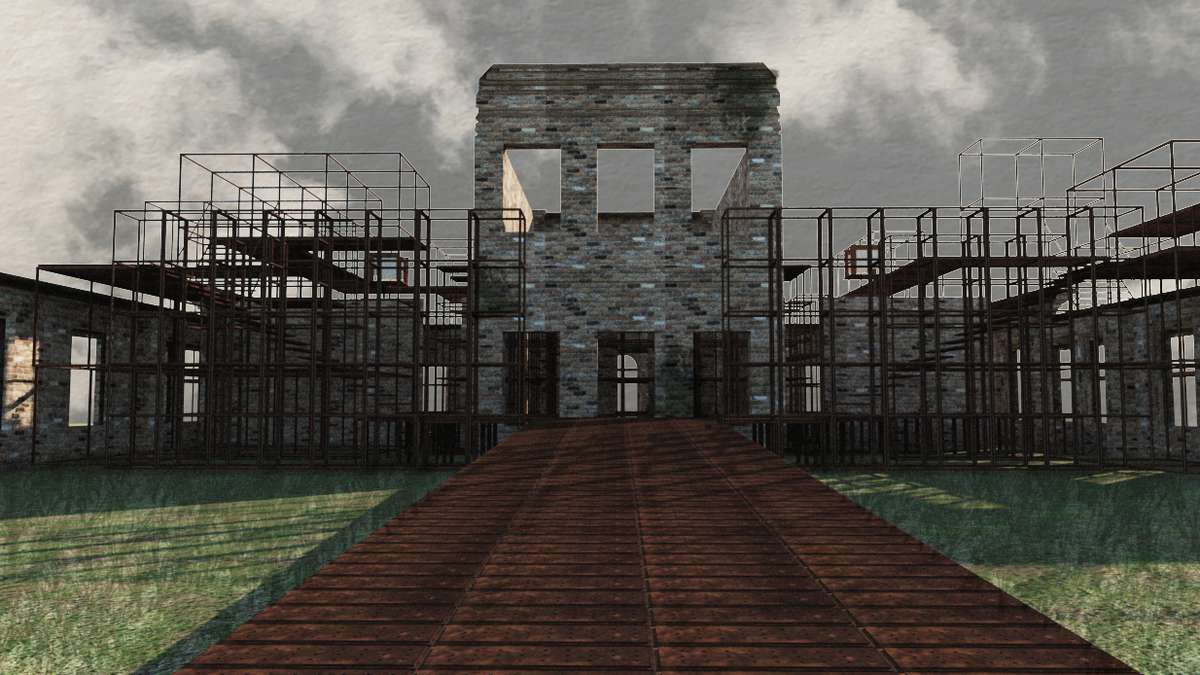
Against the terreiro's design strategy, the ruins of Casa Grande become the point of a quiet place for materialized noises through a permanent installation that leads to restlessly reconstructing rooms, which sometimes turn into lookout points to the Tinguá Park and the Mountains - where the Iguassú River was born, the main way of arrival of African slaves in the region. Reference: Personal collection
White memory, Black inheritance
White memory, Black inheritance

- Site-specific cases
The project arouses the need for new perspectives for the prospect of the construction of contemporary space, seeking to reverse the aspects of memory devaluation and its reflexes in our society. The present work constitutes a critique of the omitted narrative of Black memory and the structuring of this emptying reflected in the spatial construction of cities.
The place attracts several people who passes by. Today a set in ruins, it draws attention for its peculiar beauty in the region. But the highlight of the set is the “Casa Grande”. As a result, visitors do not have the dimension of the existence of what is below the high level of the “Casa Grande”: the slave quarters and the mill. This differentiation in elevation in farm construction brings this segregation beyond spatial boundaries, but this physical aspect also unintentionally relates to the erasure of this memory.
The project is an essay of deconstruction and resignification of memory and space.
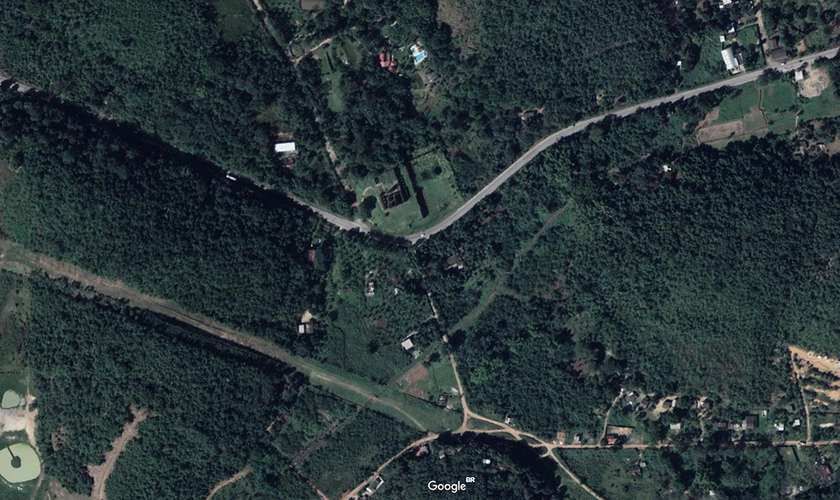
Aerial view of São Bernardino Farm and its surroundings. Reference: Google Earth
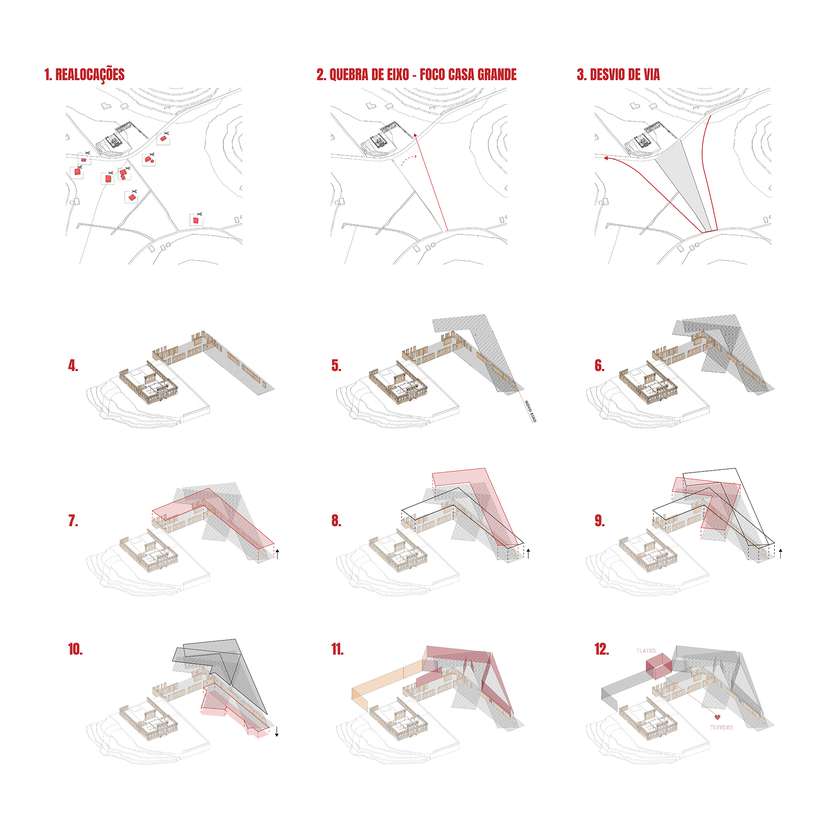
The initial strategies were built from the perception of reversing spatial aspects of Casa Grande's protagonization, which begins in the first major gesture: the breaking of the palm tree axis, which was designed to emphasize the imposing architecture of Casa Grande. With the break of this axis, the project gets an arrival that turns into a park, as a route that is told by sights, preparing the visitor for the arrival at the Memorial. Reference: Personal collection
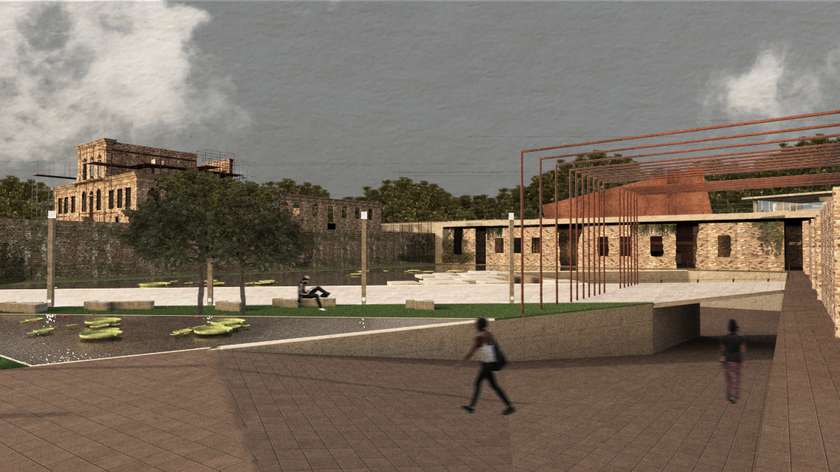
From the path of the ruins the visitor is invited to “dive” into the interior of the project, a metaphorical strategy that brings the perception of entering the narrative of the place, which is led by a ramp that cuts the reflection pool, another element of great relevance in the project. Reference: Personal collection
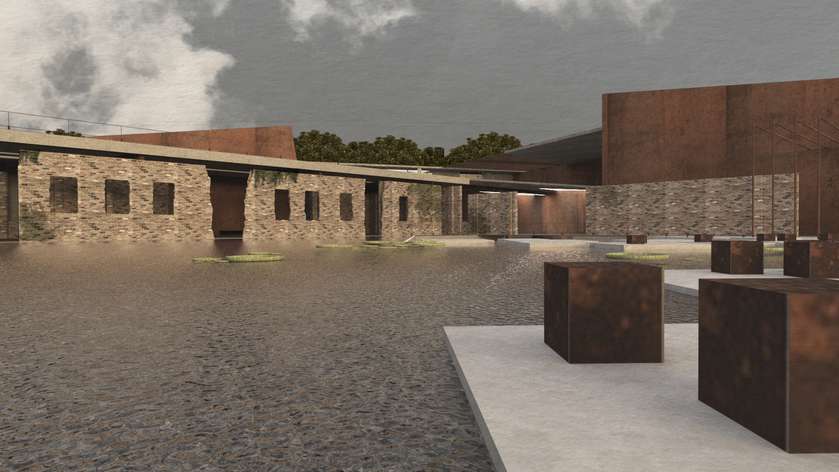
The water of this pool reflects the ruins of the slave quarters and the mill that lie exactly in the yard, transforming this space of great noise into a place of silence and reflection. Reference: Personal collection
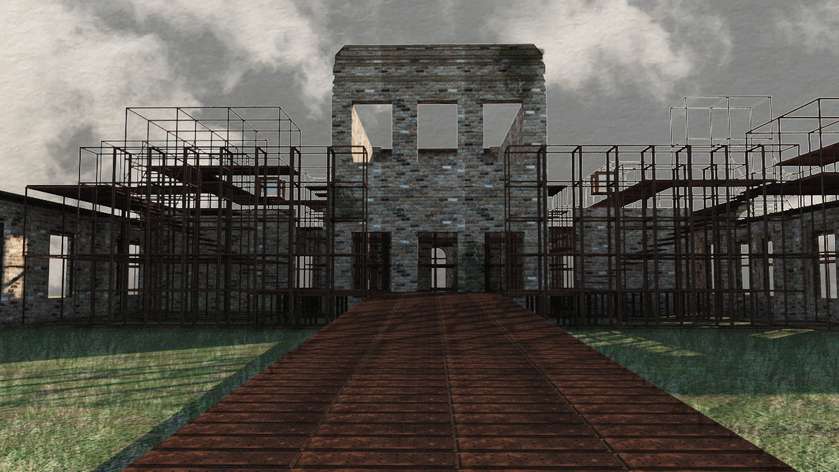
Against the terreiro's design strategy, the ruins of Casa Grande become the point of a quiet place for materialized noises through a permanent installation that leads to restlessly reconstructing rooms, which sometimes turn into lookout points to the Tinguá Park and the Mountains - where the Iguassú River was born, the main way of arrival of African slaves in the region. Reference: Personal collection